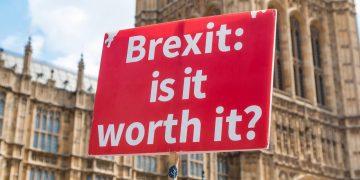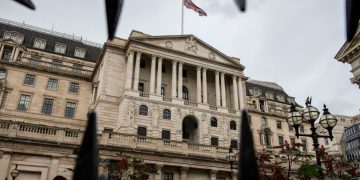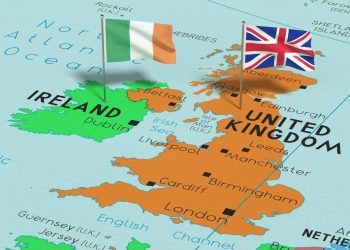Given this dire British economic outlook, reducing the cost of living crisis should be the government’s top priority. Unfortunately, most short-term factors that drive up prices and stunt growth are out of control, such as sharp fluctuations in global energy markets, Russia’s invasion of Ukraine, or coronary quarantine in Chinese manufacturing metropolises. However, the government can still take steps to reduce the pressure on households in the short term.
What is the cost of living crisis?
The cost of living crisis refers to the fall in ‘real’ disposable incomes (adjusted for inflation and after taxes and benefits) that the UK has experienced since late 2021. It is caused predominantly by high inflation outstripping wage and benefit increases and has been further exacerbated by recent tax increases. In early February, the government announced measures to respond to high energy prices, a particular flashpoint of the crisis. The chancellor announced some more general policies to support squeezed household budgets in the spring statement. The chancellor told a much larger package of household support for energy bills in late May.
Most lower-income households will be more or less fully protected from increased inflation. But for many other families, inflation is expected to grow faster than post-tax and benefit incomes this year. Inflation is calculated as the average change in the price of typical goods and services purchased by UK households over 12 months. This is tracked using the Consumer Price Index (CPI), calculated by the Office for National Statistics using a sample of 180,000 prices of 700 common consumer goods and services. The latest data has the current CPI at 9% in the 12 months to April 2022.
The Bank of England aims to keep the CPI inflation rate at 2% plus or minus 1% (i.e. between 1% and 3%) and adjusts interest rates to achieve this. However, CPI excludes the cost of housing. An alternative measure of inflation produced by the ONS, the Consumer Prices Index with Housing (CPIH), is in some ways a better measure of inflation as it includes owner-occupiers’ housing costs. Current CPIH is currently a little lower than CPI, at 7.8%.
What is the UK government doing about the cost of living crisis?
Government sources say that Rishi Sunak will take some limited action to tackle the cost of living crisis but will reject calls to beef up his much-criticised energy bill reduction scheme. Amid mounting pressure from inside his party, and with some City analysts predicting inflation could hit 10% within months, the chancellor has asked Treasury officials to draw up options for cushioning the blow for consumers.
Treasury sources stress that the government cannot protect the public from a global crisis – and underline the fact that the public finances are weaker than at the start of the pandemic, when Sunak took radical steps, including the furlough scheme. “We have dealt with one crisis that was supposed to be once-in-a-generation, and we have just walked into another one,” they said. “There’s only so much that can be done, and we’ve never seen oil prices where they are now.” One widely mooted option would be to raise state benefits by more than the 3.1% pencilled in at last autumn’s budget, which looks set to amount to a hefty real-terms cut, given the rapid increase in inflation since.
Torsten Bell, director of thinktank the Resolution Foundation, said: “Fast-rising inflation and income falls on a scale only seen in recessions will be the defining economic feature of the year ahead. The war in Ukraine has only deepened the squeeze that households will face. “The chancellor cannot protect the country from the economic pain that higher energy prices bring, but he can decide who bears the burden. His top priority for the spring statement should be to ensure benefits don’t fall £10bn behind the fast-rising cost of living.”
Why are prices increasing rapidly?
Cost pressures have been apparent in the economy since mid-2021, when many advanced countries reopened their economies from coronavirus lockdowns. Gas prices have increased because of several factors. Increased demand for gas from Asia, depleted gas storage supplies in Europe, unexpected outages in Liquified Natural Gas (LNG) production and the war between Ukraine and Russia (a major supplier of European gas) have contributed to the significant price increases since mid-2021. Gas is an important energy source in the UK: nearly 80% of households in England are heated by mains gas, and a third of electricity is generated in gas power stations. Disruption to global supply chains has also increased prices. Pandemic shutdowns of factories in Asia have caused a shortage of semiconductors, an essential component in everyday consumer goods.
Global shipping costs have also increased as shipping firms reduced capacity by 11% during the pandemic in anticipation of reduced demand. The average cost of shipping a large container rose fourfold in the 12 months to September 2021. This has increased the price of commodities such as timber and other imported products.
The Russian invasion of Ukraine has significantly exacerbated these economic stresses. Many international companies have permanently ceased operations in Russia to comply with financial sanctions or due to reputational risk. The dangerous security situation in Ukraine has also prompted many companies to close factories temporarily. European industrial production has declined due to a shortage of essential parts from Ukraine, such as wiring harnesses used in cars.
Along with the semiconductor shortage, this has substantially pushed the price of second-hand cars as consumers switch demand toward used vehicles. Although the UK imports only around 13% of its total fuel (oil, gas, LNG, electricity) from Russia, it is still vulnerable to any disruption to the supply of energy to the EU, which is more reliant on Russia for its power. Due to the integration of energy markets, UK and EU gas and electricity prices move together. The recent announcement by the European Commission to phase out EU imports of Russian oil will likely push up prices in other markets the UK uses, such as Norway and Qatar. Ukraine is also a significant exporter of agricultural commodities such as grain and sunflower oil. Disruption to the supplies of these commodities could lead to substantial increases in global food prices.
Conclusion
Poorer households are currently experiencing higher inflation – on average – than better-off households. The Institute for Fiscal Studies estimated – based on the share of budgets spent on different broad product groups – the annual inflation rate for the poorest 10% of households to be 10.9% in April.
By contrast, the wealthiest 10% of households had the lowest inflation rate, at 7.9%. This is because energy costs – the primary driver of recent inflation – make up a more significant proportion of household budgets for low-income households. Anti-food poverty campaigner Jack Monroe has argued that the situation for poorer families is even worse than this because the price of the lowest-cost food items on which these households rely has increased further, or the cheapest products have been unavailable in stores.
Experimental statistics from the ONS suggest that the rate of inflation for the cheapest, everyday products online is similar to food inflation. However, these goods may be less available in stores. Even if inflation rates were identical, the impact of inflation on poorer households might be more significant.
A more affluent household might be able to absorb higher energy costs, for example, by reducing how much it saves. Still, that option will not be available for many low-income households. Once the government’s new measures come in, starting in July, support will be tremendous for poorer households than the rest, so they should be better protected from the crisis this year than most other households.





























